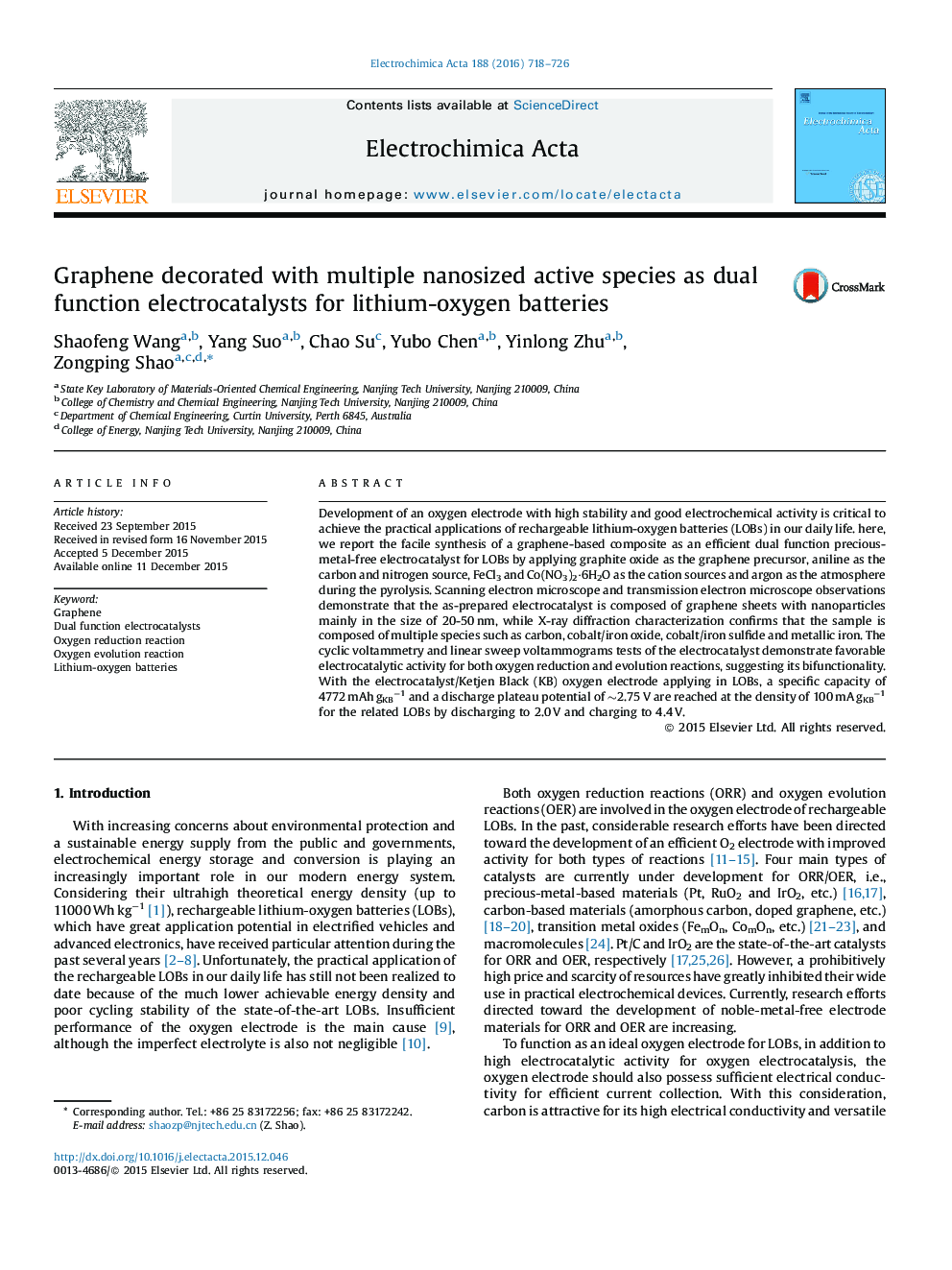| Article ID | Journal | Published Year | Pages | File Type |
|---|---|---|---|---|
| 183408 | Electrochimica Acta | 2016 | 9 Pages |
•Graphene-based composite as dual function electrocatalysts was synthesised.•The composite shows a bifunctionality for oxygen reduction and evolution reactions.•Enhanced performances are reached using the composite in Li-O2 batteries.
Development of an oxygen electrode with high stability and good electrochemical activity is critical to achieve the practical applications of rechargeable lithium-oxygen batteries (LOBs) in our daily life. here, we report the facile synthesis of a graphene-based composite as an efficient dual function precious-metal-free electrocatalyst for LOBs by applying graphite oxide as the graphene precursor, aniline as the carbon and nitrogen source, FeCl3 and Co(NO3)2·6H2O as the cation sources and argon as the atmosphere during the pyrolysis. Scanning electron microscope and transmission electron microscope observations demonstrate that the as-prepared electrocatalyst is composed of graphene sheets with nanoparticles mainly in the size of 20-50 nm, while X-ray diffraction characterization confirms that the sample is composed of multiple species such as carbon, cobalt/iron oxide, cobalt/iron sulfide and metallic iron. The cyclic voltammetry and linear sweep voltammograms tests of the electrocatalyst demonstrate favorable electrocatalytic activity for both oxygen reduction and evolution reactions, suggesting its bifunctionality. With the electrocatalyst/Ketjen Black (KB) oxygen electrode applying in LOBs, a specific capacity of 4772 mAh gKB−1 and a discharge plateau potential of ∼2.75 V are reached at the density of 100 mA gKB−1 for the related LOBs by discharging to 2.0 V and charging to 4.4 V.
